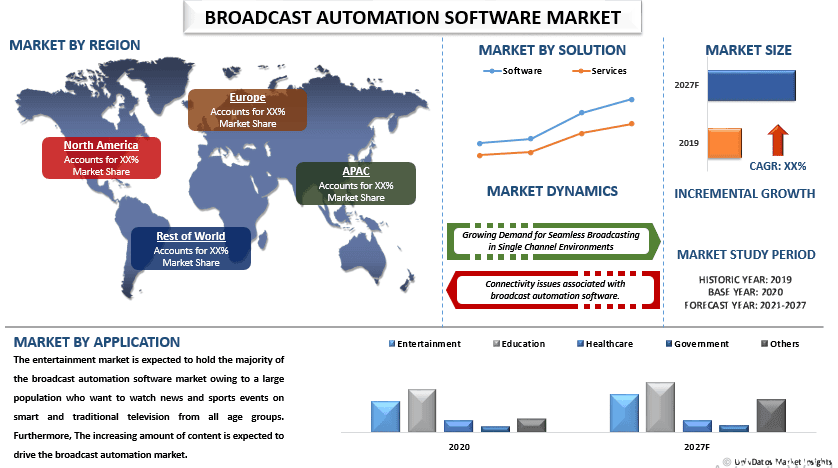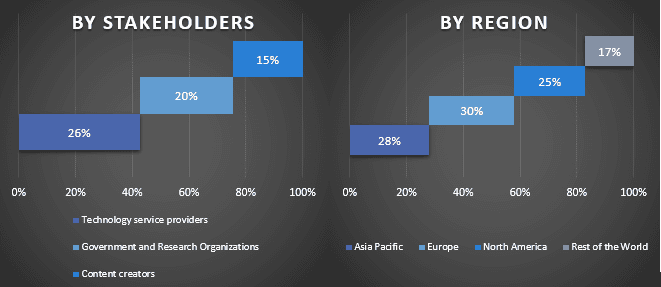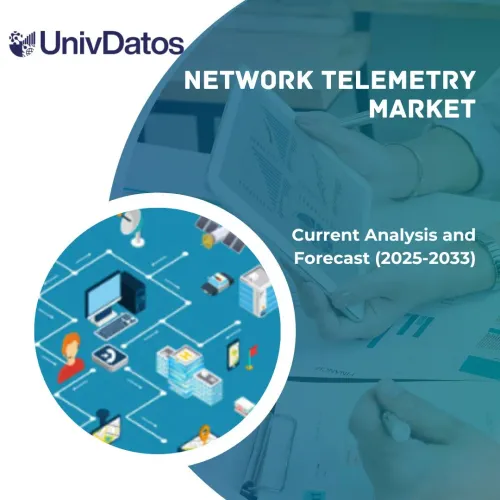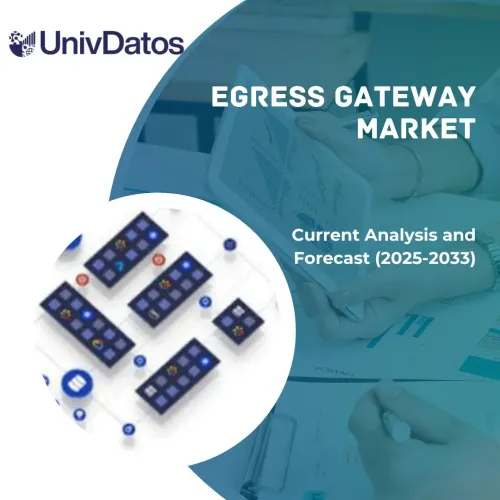- Home
- About Us
- Industry
- Services
- Reading
- Contact Us
Broadcast Automation Software Market: Current Analysis and Forecast (2021-2027)
Emphasis on Product (Web-based, Cloud-based, Hybrid); Solution (Software, Services); Application (Entertainment, Education, Healthcare, Government, Others); Region/ Country

The Broadcast Automation Software Market is expected to grow at a CAGR of 10% during the forecast period. The growing complexity in broadcast media planning and the increase in the adoption of cloud-based solutions are the key factors expected to drive market growth over the forecast period. Furthermore, increasing demand for multimedia streaming applications and smart devices is also expected to fuel the market growth. Moreover, for creating a better & great user experience, broadcast automation software aids in improved TV programming and planning. The growth is attributed to the growing demand for seamless broadcasting in single-channel environments, and the rising popularity of multimedia streaming applications across the globe. The workflow of production, broadcast department, and advertising with regard to broadcast planning is managed by broadcast automation software.
Insights Presented in the Report
“Amongst product, the hybrid segment is expected to witness the highest CAGR during the forecast period”
Based on product, the market is segmented into web-based, cloud-based, and hybrid. The hybrid segment is expected to hold the majority of the broadcast automation software market owing to the shifting preference of consumers for online and streaming media platforms. Furthermore, there have been increased adoption rates across various countries and high flexibility, cost efficiency, and real-time access to broadcasting content offered by hybrid deployment are also predicted to boost segment growth in the future.
“Amongst solution, the services segment is expected to witness the highest CAGR during the forecast period”
Based on the solution, the market is segmented into software and services. The services market is expected to hold the majority of the broadcast automation software market. An increase in demand for broadcast management and automation solutions from radio and TV broadcasters are the key factors contributing to the growth of this segment. Also, a wide variety of applications and expertise are provided. The growing demand for integration and hosting services is also expected to fuel the growth of this segment.
“Amongst application, the entertainment segment is expected to witness the highest CAGR during the forecast period”
Based on application, the market is segmented into entertainment, education, healthcare, government, and others. The entertainment market is expected to hold the majority of the broadcast automation software market owing to the increase in demand for broadcast management and automation solutions from radio and TV broadcasters. Furthermore, also attributed to a large population who want to watch news and sports events on smart and traditional television from all age groups.
“Asia Pacific to witness significant growth during the forecast period”
The Asia Pacific region is expected to witness noteworthy growth during the forecast period. Owing to the growing adoption of advanced technologies and the presence of a large number of Tv households in the region and the growing income of the urban population in the region are expected to drive the broadcast automation software market. Furthermore, the presence of key market players and increasing investments in the development of new technologies and in R&D are expected to drive the broadcast automation market.
Reasons to buy this report:
- The study includes market sizing and forecasting analysis validated by authenticated key industry experts.
- The report presents a quick review of overall industry performance at one glance.
- The report covers an in-depth analysis of prominent industry peers with a primary focus on key business financials, product portfolios, expansion strategies, and recent developments.
- Detailed examination of drivers, restraints, key trends, and opportunities prevailing in the industry.
- The study comprehensively covers the market across different segments.
- Deep dive regional level analysis of the industry.
Customization Options:
The global broadcast automation software market can further be customized as per the requirement or any other market segment. Besides this, UMI understands that you may have your own business needs, hence feel free to connect with us to get a report that completely suits your requirements.
price list?
Table of Content
Research Methodology for The Global Broadcast Automation Software Market Analysis (2021-2027)
Analyzing the historical market, estimating the current market, and forecasting the future market of the global broadcast automation software market were the three major steps undertaken to create and analyze the adoption of Broadcast automation software in major regions globally. Exhaustive secondary research was conducted to collect the historical market numbers and estimate the current market size. Secondly, to validate these insights, numerous findings and assumptions were taken into consideration. Moreover, exhaustive primary interviews were also conducted, with industry experts across the value chain of the global broadcast automation software market. Post assumption and validation of market numbers through primary interviews, we employed a top-down/bottom-up approach to forecasting the complete market size. Thereafter, market breakdown and data triangulation methods were adopted to estimate and analyze the market size of segments and sub-segments of the industry pertains to. Detailed methodology is explained below:
Analysis of Historical Market Size
Step 1: In-Depth Study of Secondary Sources:
Detail secondary study was conducted to obtain the historical market size of the Broadcast automation software market through company internal sources such as annual reports & financial statements, performance presentations, press releases, etc., and external sources including journals, news & articles, government publications, competitor publications, sector reports, third-party database, and other credible publications.
Step 2: Market Segmentation:
After obtaining the historical market size of the Broadcast automation software market, we conducted a detailed secondary analysis to gather historical market insights and share for different segments & sub-segments for major regions. Major segments are included in the report as product, solution, and application. Further country-level analyses were conducted to evaluate the overall adoption of testing models in that region.
Step 3: Factor Analysis:
After acquiring the historical market size of different segments and sub-segments, we conducted a detailed factor analysis to estimate the current market size of the broadcast automation software market. Further, we conducted factor analysis using dependent and independent variables such as various product, solution, and application of broadcast automation software. A thorough analysis was conducted for demand and supply-side scenarios considering top partnerships, mergers and acquisitions, business expansion, and product launches in the Broadcast automation software market sector across the globe.
Current Market Size Estimate & Forecast
Current Market Sizing: Based on actionable insights from the above 3 steps, we arrived at the current market size, key players in the global broadcast automation software market, and market shares of the segments. All the required percentage shares split, and market breakdowns were determined using the above-mentioned secondary approach and were verified through primary interviews.
Estimation & Forecasting: For market estimation and forecast, weights were assigned to different factors including drivers & trends, restraints, and opportunities available for the stakeholders. After analyzing these factors, relevant forecasting techniques i.e., top-down/bottom-up approach were applied to arrive at the market forecast about 2027 for different segments and sub-segments across the major markets globally. The research methodology adopted to estimate the market size encompasses:
- The industry’s market size, in terms of revenue (USD) and the adoption rate of the Broadcast automation software market across the major markets domestically
- All percentage shares, splits, and breakdowns of market segments and sub-segments
- Key players in the global broadcast automation software market in terms of solutions offered. Also, the growth strategies adopted by these players to compete in the fast-growing market
Market Size and Share Validation
Primary Research: In-depth interviews were conducted with the Key Opinion Leaders (KOLs) including Top Level Executives (CXO/VPs, Sales Head, Marketing Head, Operational Head, and Regional Head, Country Head, etc.) across major regions. Primary research findings were then summarized, and statistical analysis was performed to prove the stated hypothesis. Inputs from primary research were consolidated with secondary findings, hence turning information into actionable insights.
Split of Primary Participants in Different Regions

Market Engineering
The data triangulation technique was employed to complete the overall market estimation and to arrive at precise statistical numbers for each segment and sub-segment of the global broadcast automation software market. Data was split into several segments & sub-segments post studying various parameters and trends in the areas of product, solution and, application in the global broadcast automation software market.
The main objective of the global broadcast automation software market study
The current & future market trends of the global broadcast automation software market were pinpointed in the study. Investors can gain strategic insights to base their discretion for investments on the qualitative and quantitative analysis performed in the study. Current and future market trends determined the overall attractiveness of the market at a regional level, providing a platform for the industrial participant to exploit the untapped market to benefit from a first-mover advantage. Other quantitative goals of the studies include:
- Analyze the current and forecast market size of the Broadcast automation software market in terms of value (USD). Also, analyze the current and forecast market size of different segments and sub-segments
- Segments in the study include areas of product, solution, and application.
- Define and analysis of the regulatory framework for the Broadcast automation software market industry.
- Analyze the value chain involved with the presence of various intermediaries, along with analyzing customer and competitor behaviors of the industry.
- Analyze the current and forecast market size of the Broadcast automation software market for the major region.
- Major countries of regions studied in the report include Asia Pacific, Europe, North America, and the Rest of the world.
- Company profiles of the Broadcast automation software market and the growth strategies adopted by the market players to sustain in the fast-growing market
- Deep dive regional level analysis of the industry
Related Reports
Customers who bought this item also bought










